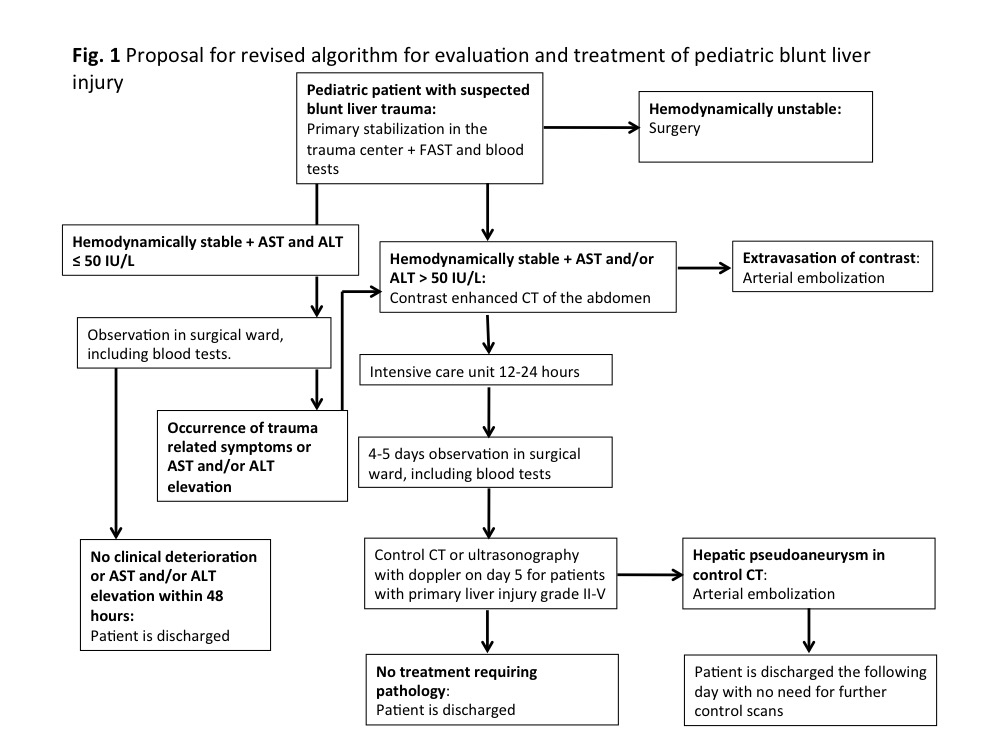P. J. Bruhn1, L. Østerballe1, J. Hillingsø1, L. B. Svendsen1, F. Helgstrand2 1Rigshospitalet, Copenhagen University Hospital,Department Of Surgical Gastroenterology,Copenhagen, -, Denmark 2Køge Hospital, Copenhagen University Hospital,Department Of Surgical Gastroenterology,Køge, -, Denmark
Introduction: Computed tomography (CT) is the gold standard in the initial evaluation of the hemodynamically stable patient with suspected blunt liver trauma. However, the adverse effects of radiation exposure are of specific concern in the pediatric population. It is therefore desirable to explore alternative diagnostic modalities. Aspartate aminotransferase (AST) and alanine aminotransferase (ALT) are hepatic enzymes, which are elevated in peripheral blood in relation to liver injury. The aim of the present study was to investigate, if normal liver transaminase levels are of value in the decision algorithm in suspected pediatric blunt liver trauma.
Methods: Retrospective analysis of consecutively collected data from children (0-17 years) with CT-diagnosed blunt liver trauma, admitted to a single level one trauma centre, between 2000 and 2013. We included patients, who underwent abdominal CT during initial evaluation, and in whom initial AST and/or ALT was measured. Based on local guidelines, we set the threshold for blood AST and ALT level to 50 IU/L.
Results: Sixty consecutive children with liver injury following blunt abdominal trauma were enrolled in the study. All patients with normal AST and/or ALT level were treated conservatively with success. Information on both AST and ALT was available in 47 children. Of these 47 children, three children had both AST and ALT levels equal to or lower than 50 IU/l. These children suffered from grade I liver injuries, and were treated conservatively with no complications. AST and ALT levels showed significant positive correlation to liver injury grades (p=0.002 for AST, and p=0.022 for ALT).
Conclusion: Our study indicates that CT might be superfluous in the initial evaluation of hemodynamically stable children with suspected blunt liver injury and blood AST and ALT levels equal to or below 50 IU/L. On the basis of our results, we propose a revised algorithm for management of pediatric blunt liver injury, which includes evaluation of AST and ALT as a screening method to avoid abdominal CT (figure 1).
